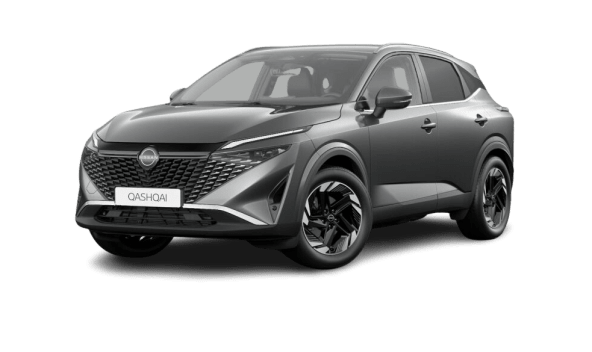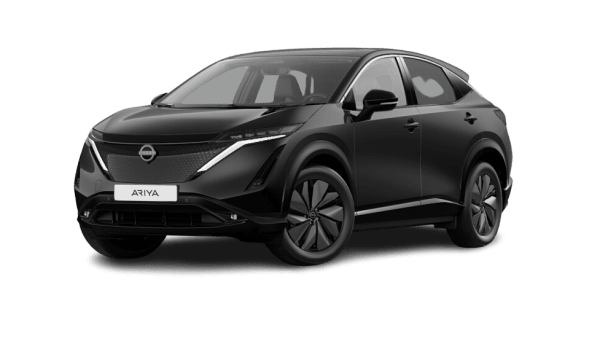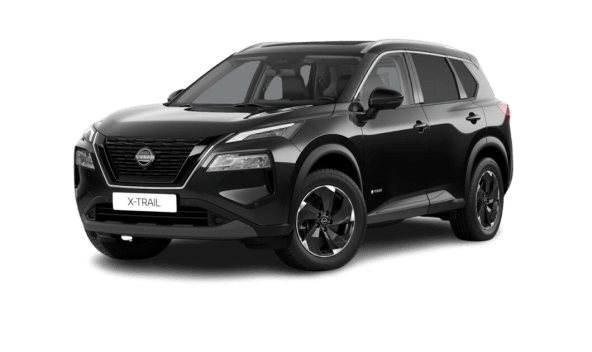Nissan Versa vs. Sentra: A Comparison
The Nissan Versa and Sentra are mainstays in the compact car segment. Learn more about the Nissan Versa versus the Sentra and which is the best fit for you.
Read time
8 minutes
Date
03.06.2024
Share
Key takeaways
- The Nissan Versa and Nissan Sentra cater to those seeking compact, efficient sedans; the Versa offers a manual transmission option, while the Sentra provides more space and comfort.
- The Versa is the more affordable option with efficient fuel consumption, while the Sentra, costing slightly more, provides enhanced features and legroom.
- Both models feature essential safety and technology options, with the Versa focusing on affordability and the Sentra on additional comforts and slightly better towing capacity.
A close look at Nissan’s sedan lineup reveals the brand’s obsession with ending their nameplates with the letter “A.” At the same time, the similarities don’t end there. The Maxima and Altima represent Nissan’s larger sedans, but the Versa and Sentra cater to a popular segment of drivers looking for an entry-level platform that’s as nimble as it is compact. However, choosing between the Nissan Versa and Sentra can present a challenge.
FINN allows you to extend your decision and inform it with direct driving experience with the Nissan Sentra and Nissan Versa. FINN’s flexible terms put you behind the wheel for six months to two years, with variable mileage options available. Your monthly subscription fee also includes insurance, registration, depreciation, and maintenance, so you can hit the road without creating a complicated car budget.
Find your Nissan
What’s the difference between the Nissan Versa vs. Sentra?
The Nissan Sentra and Versa are similar in their cute and compact nature. Read on to learn more about how these Nissan models differ:
Nissan Versa | Nissan Sentra |
|
|
Beyond the Nissan Versa and Sentra comparison, you can also compare either model to the Subaru Crosstrek, Toyota Corolla, Honda Civic, Hyundai Elantra, or Kia Rio and Forte. The Versa is one of the few entry-level sedans that offers a manual transmission. Additional Nissan sedans include the Altima, Maxima, and the electric LEAF.
Nissan Versa vs. Sentra price
The 2024 Nissan Sentra and Versa are similarly priced, but the Versa cost slightly less. The base Versa sedan can be purchased with a continuously variable transmission (CVT) or a five-speed manual transmission. The stick-shift model costs the least at $16,390, while the CVT is slightly more at $18,060. SV models cost $19,680, and the SR model begins at $20,400.
In contrast, the 2024 Nissan Sentra starts at $20,890 for the base S model. The SV is $21,820, while the SR is $23,980. As you can see, only about $4,000 stands between the Nissan Versa SR and the Nissan Sentra SR.
Nissan Versa vs. Sentra size
The 2024 Nissan Versa and Sentra seat up to five occupants. The 2024 Sentra is slightly longer at 182.9 inches, with a 106.6-inch wheelbase. The Sentra measures 71.5 inches wide and 56.9 inches tall unless you purchase the SR model, which is 0.1 inches taller. The rear legroom on the 2024 Sentra measures 34.9 inches in total.
The 2024 Versa has a 103.1-inch wheelbase and measures 177 inches long. The Versa is 68.5 inches wide and stands 57.5 inches tall. Again, the SR model is just slightly taller at 57.7 inches. Rear legroom on the 2024 Versa measures 31 inches.
Nissan Versa vs. Sentra interior features
The 2024 Nissan Versa offers up to 15 cubic feet of cargo space on the SV and SR models, but base models only have 14.7 cubic feet. Interior features also include cloth seating, a tilt and telescoping steering column, and manually adjusted seats. Optional features include a center console with an armrest and inner storage, heated front seats, a leather steering wheel, remote and push-button start, automatic temperature control, chrome interior door handles, and sport cloth seating.
In comparison, the 2024 Sentra features 14.3 cubic feet of cargo capacity. Base trims have cloth seating, remote keyless entry, and a push-button start ignition. Optional features include a heated steering wheel, heated side mirrors, heated front seats, a moonroof, leather seating, a leather steering wheel, and an Intelligent Key.
Nissan Versa vs. Sentra exterior and towing capacity
Between the 2024 Nissan Sentra and Versa, the Sentra carries more cues of the import brand than the Versa platform. Both models incorporate high wheel arches and a pinched rear window. The broad Nissan grille and circular badge also sit front and center. However, the Sentra features a two-tone roof that adds a certain dynamism to the exterior styling.
The 2024 Sentra and Versa aren’t likely your first pick for towing anything. However, if you equip them with the proper towing components, you can pull up to 955 pounds with the 2024 Nissan Versa. The 2024 NissanSentra handles towing 963 pounds.
Nissan Versa vs. Sentra engine and fuel economy
Both compact Nissan models rely on smaller-output engines to propel them forward on the road ahead. The 2024 Versa features a front-wheel-drive (FWD) 1.6-liter engine with 122 horsepower and 114 lb-ft of torque. The 2.0-liter in the 2024 Sentra offers up to 149 horsepower and 146 lb-ft of torque in a similar FWD configuration. Both models rely on a continuously variable transmission (CVT) to change gears.
When it comes to fuel efficiency, Nissan’s compact sedans are some of the most environmentally friendly cars. The 2024 Versa and Sentra hit the mark at 30 miles-per-gallon (MPG) combined or more. The manual Versa actually only makes 27 city and 35 highway MPG, while the automatic achieves 32 city and 40 highway MPG. The 2024 Sentra achieves up to 34 MPG combined, with 30 city and 40 highway MPG.
Nissan Versa vs. Sentra technology and safety features
The National Highway Traffic Safety Administration (NHTSA) has yet to rate the 2024 Nissan Sentra. However, the Insurance Institute for Highway Safety (IIHS) awarded the model a “Good” rating in the “Side: original test” but only awarded it an “Acceptable” rating in the “Side: updated test.” In contrast, the 2024 Nissan Versa received “Good” ratings in all crashworthiness tests from the IIHS. The NHTSA also awarded the 2024 Versa a five-star overall safety rating.
Standard safety features on both sedans include:
Automatic Emergency Braking with Pedestrian Detection
Brake Assist
High Beam Assist
Rearview Monitor
Lane Departure Warning
Rear Automatic Braking
Optional safety features on the 2024 Versa include Blind Spot Warning, Intelligent Cruise Control, Rear Cross-Traffic Alert, and Intelligent Driver Alertness. The 2024 Sentra also incorporates Intelligent Forward Collision Warning with Automatic Emergency Braking, Blind Spot Warning, Intelligent Driver Alertness, Cruise Control, and Rear Parking Sensors as standard safety equipment. Additional safety features on the Sentra include Cruise Control with Distance Pacing.
Standard tech varies little between both models. The Versa has a seven-inch infotainment touchscreen, Bluetooth, and voice recognition. Optional equipment includes Apple CarPlay and Android Auto, an eight-inch infotainment touchscreen on the SR model, and a wireless charger. The Sentra’s standard equipment includes Apple CarPlay, Bluetooth, and a seven-inch infotainment screen. A Bose eight-speaker sound system and an eight-inch touchscreen are optional.
Who is a Nissan Versa for?
The Nissan Versa makes a versatile pick for the best mom cars, cars for students, and capable in-town cars that can easily navigate tight city streets. The Versa may be one of the smallest platforms Nissan offers, but it’s no slouch regarding cargo space and fuel efficiency. You can also purchase the Versa in a stick shift, so manual aficionados may gravitate toward this nameplate naturally.
Who is a Nissan Sentra for?
The Nissan Sentra is a slightly larger platform with more real estate to lean into the style cues Nissan sedans are known for. First-time buyers and growing families alike can find value in the Sentra, which starts at a reasonable price for most car budgets. While the Sentra isn’t necessarily as large or capable as its Altima and Maxima older siblings, it’s one of the entry-level sedans Nissan offers to target consumers looking for a small, fuel-efficient car that’s as technology-forward as it is maneuverable.

Which is better: Nissan Versa vs. Sentra?
The Nissan Versa and Sentra are two small import sedans demonstrating that size doesn’t equate to sacrifice. Although the list of features on these Nissans may not be as long as larger midsize sedans, the Versa and Sentra are fuel-efficient, full of cargo capacity, and fully connected. The Versa keeps it simple with an available stick-shift transmission, while the Sentra distills the brand’s value statement into a compact, versatile platform.
If you’re finding the choice between the Nissan Versa and Sentra even more challenging, FINN has a car subscription solution to ease your mind. Subscribe to FINN to drive both the Sentra and Versa for six to 24 months, with flexible mileage options to suit your lifestyle. FINN also incorporates several car ownership costs into your monthly subscription fee for the ultimate value in a convenient driving experience.
Nissan Versa vs. Sentra FAQs
Looking at the Nissan Versa and Sentra, you may ask yourself how leasing a car works or if you can lease a used car. Read on to learn more about the Nissan Versa and Sentra to help guide your decision.
Did the Versa replace the Sentra?
The Versa did not replace the Sentra, as Nissan still sells both nameplates. However, the Versa slots below the Sentra as the brand’s most affordable model, especially if you purchase it with a manual transmission.
What are the cons of a Nissan Sentra?
A Nissan Sentra can be small for many growing families, especially those who need more cargo space. The Sentra also offers a powerplant that can feel sluggish compared to peppier engines.
How does the fuel efficiency of the Nissan Versa compare to the Nissan Sentra?
The Nissan Sentra and Versa rank close to one another regarding fuel efficiency. However, the automatic 2024 Nissan Versa is the most fuel-efficient, with 35 MPG combined.
You may also like

The best alternative to a Nissan lease
Are you looking to lease a Nissan? This may be your solution. A FINN car subscription offers you the perfect alternative to Nissan leasing – with no hidden costs and delivered right to your doorstep.

How Do Car Loans Work?
Do you know how car loans work? Read on to learn more about key loan terms, where to get an auto loan, and how you can better approach your next car loan.

Debt-To-Income Ratio for a Car Loan: How It Works
Do you know your debt-to-income ratio? Learn more about your DTI ratio, from how it works to how you can use it to your advantage in your next purchase.






